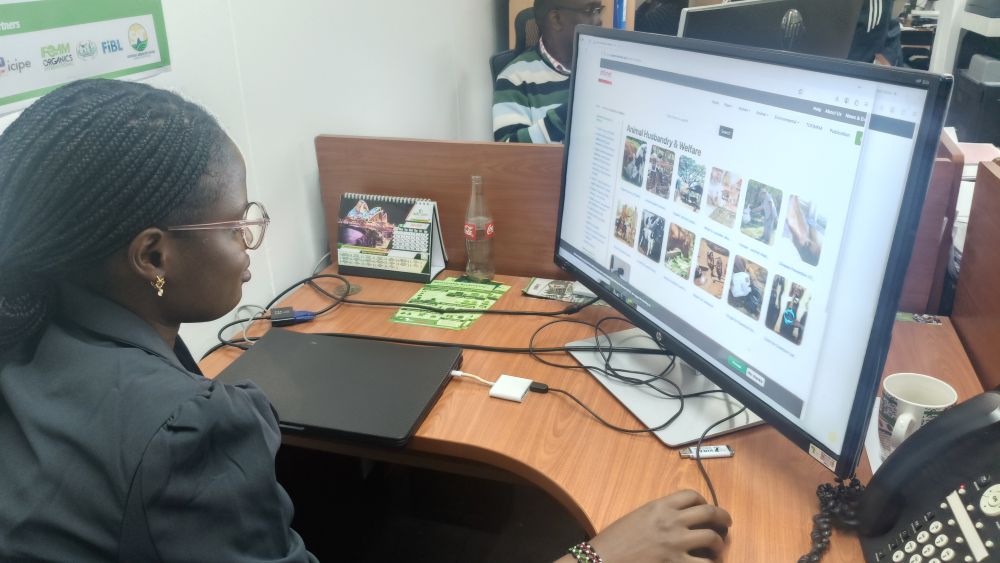
Smallholder farmers face constant challenges – pest outbreaks, plant diseases, and unpredictable weather can all devastate crops and livelihoods.
But thanks to advances in technology, digital biosurveillance is becoming a game-changer.
This guide shows how smallholder farmers can adopt simple, affordable digital tools like satellite imagery and mobile apps to protect their crops, reduce losses, and make smarter farming decisions.
What Is Digital Biosurveillance?
Digital biosurveillance refers to the use of digital tools and data to monitor biological threats to crops – such as pests, diseases, or weather-related stress – before they become severe.
Instead of reacting to visible damage, farmers can receive early alerts and take action while there’s still time to prevent major losses, helping them optimize inputs, improve yields, and increase overall resilience.
Why It Matters For Smallholder Farmers
Smallholder farmers often operate with limited resources, meaning they can’t afford major crop losses. A pest like Fall Armyworm or Tuta absoluta can absolutely destroy a season’s work if not caught early.
Digital biosurveillance gives farmers early warning signals so they can respond quickly and efficiently – using fewer chemicals, saving money, and reducing damage.
Other benefits include localized weather forecasts, disease and pest tracking, and the ability to make data-based decisions that reduce guesswork and boost productivity.
Instruments for Biosurveillance
Images from Satellites
Satellite imagery is one of the best tools for digital biosurveillance. These photos show early pest damage, crop stress, and water scarcity – often days or weeks before symptoms show up in the field.
Satellite insights can be accessed without the need for costly software. Numerous programs provide low-cost or free data:
- Sentinel (ESA): Small farms can benefit from high-resolution imagery.
- MODIS (NASA): Wide-ranging environmental monitoring, excellent for seasonal patterns or drought.
- Google Earth Engine: A free platform that allows advisors or farmers to use basic tools to analyze satellite data.
Early detection of trends and abnormalities allows you to direct resources precisely where they are needed, avoiding more expensive and environmentally damaging band-aid solutions.
Mobile Apps
Since more smallholder farmers have smartphones, mobile apps are taking biosurveillance to them. These apps integrate all relevant satellite information, pest databases, and local weather into one easy-to-use dashboard.
Features You Should Look For in an App:
- Pest identification: Upload photos and receive instant diagnoses.
- Localized weather: Plan your spraying, irrigation, and harvesting.
- Community reporting: Share pest sightings with local farmers for rapid alerts.
- Expert advice: Reach out to agronomists or extension services.
Some apps require a stable internet connection, so smallholder farmers might be advised to use a protected virtual private network like a VPN by Surfshark, to protect their data and keep their connection stable and secure.
Getting Started With Digital Biosurveillance
Contrary to what some might believe, digital biosurveillance does not require tech savviness or any particular technical training – just a few simple steps and some diligence.
Here are a few simple steps to start with your digital biosurveillance journey:
Select an agricultural monitoring app or platform that you trust. Start with a trusted platform with a free trial so you can explore what it has to offer and examine the features.
2. Set Up The Profile For Your Farm
Establish your farm location, what you are growing, and when. This allows the app to provide alerts based on your geographic area, local weather, and crop health metrics.
3. Inspect Consistently
Start a routine for checking satellite data weekly, and identify the potential for early crop stress or pest activity before you see the issue in the field.
4. Report What You Find
Report all pests or diseases you observe through the app. It will help track issues in real time and facilitate aggregation of the data for localized tracking of a larger region.
5. Use The Data To Make Informed Decisions
Incorporate the information from satellites, local weather reports, and what you are seeing locally to inform your decision around when/where to take action. This will minimize wasted inputs and maximize productivity on your farm!
Pro Tips to Maximize Your Results
- Set Weekly Alerts: Automate reminders to review your app’s latest updates so nothing slips by.
- Train Your Team: Use in-app guides to teach your farm workers how to spot early warning signs.
- Build a Farmer Network: Create a WhatsApp or SMS group with nearby farmers to share sightings quickly.
- Keep Simple Records: Track problems, treatments, and results in a logbook – digital or paper – to learn what works best.
- Partner with Local Experts: Reach out to agricultural extension services to confirm findings and get tailored advice.
Final Thoughts
Digital biosurveillance is no longer a tool just for large-scale farms – it’s now accessible, affordable, and effective for smallholder farmers. With a smartphone, a bit of curiosity, and a willingness to try something new, you can protect your crops more efficiently and plan with confidence.
Start small, stay consistent, and you’ll soon see the difference smart farming can make.
